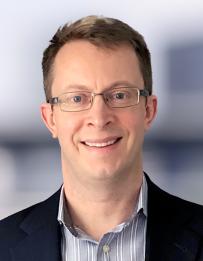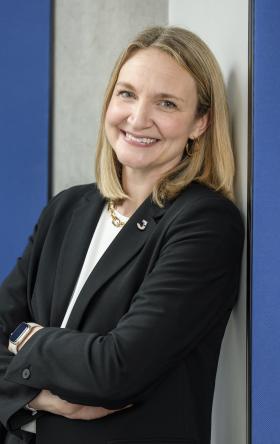A View on the Future of Tunnel & Ground Engineering: A Q&A with Mark Johnson
Global tunnel & ground engineering director’s insights on automation are anything but BORING

Tunnel and ground engineering works have a profound impact on the world, reshaping the very foundation of our landscapes and urban environments.
Whether cutting through mountains or boring deep underground, these feats of engineering allow for the creation of vital infrastructure that connects distant places, facilitates trade and improves accessibility.
With a history stretching back several decades, Jacobs works across the full project life cycle from feasibility studies and investigations, through preliminary and detailed designs, to construction management and asset management services.
From the U.K.‘s Thames Tideway, Sydney Metro’s West Central Tunnels and the U.S.’s California High Speed Rail to Singapore’s Deep Tunnel Sewerage System and New Zealand’s Central Interceptor, our tunnel and ground engineering team digs in on some of the world’s most iconic projects.
But our technical know-how isn’t just surface level. Teammates like Mark Johnson, our global cross market director of tunnel and ground engineering, work with our clients to break new ground. In this Q&A, we connect with Mark to discuss the trends and technologies laying solid foundations for tomorrow.
Tell us a bit about what a day in the life is like as Jacobs’ Global Cross Market Director for Tunnel & Ground Engineering and what we offer our clients in this space.
Tunnel and ground engineering work cuts across all end markets – from water and transportation to cities & places and energy & power. Staying up to date on our clients’ needs and challenges is a key focus of my role, ensuring we can support into the future.
What differentiates Jacobs is our global connectivity and that’s a part of the role I really enjoy. For our teammates, that’s about making every one of our 900 tunnel and ground engineering teammates around the world feel like part of a bigger team, no matter if they’re sitting in Atlanta or Singapore.
For our clients, we connect them with technical and thought leadership across the spectrum of services, whether it’s tunnel or geotechnical engineering, fire & life safety, trenchless engineering, geosciences, or anything in between; and no matter where in the world their project is located. For example, let’s say a client in the U.K. is experiencing a geotechnical issue, one of our teammates could raise the issue to one of our global communities of practice and come away with insights from Australia, from the west coast of the U.S., from Glasgow. When a client works with us, they truly get access to our best and brightest across the globe.
With infrastructure needs changing globally, where do you see the industry heading?
As with much of the world, the focus is pivoting toward energy transition. Tunnel and ground engineering work across the energy & power market is gaining significant momentum, particularly in renewable energy projects. Whether it’s geothermal, offshore wind, carbon capture or compressed air energy storage, these projects often need our tunnel engineering skills. They also need geotechnical engineering and geoscience capabilities, so there’s a massive amount of growth in that area.
Then there’s the trend toward digital transformation. For tunnel and ground engineering, that’s about digital delivery and ground modelling. How do we incorporate 3D ground models into the project’s overall BIM (Building Information Modeling) model to facilitate coordination and decision making? We’ve also developed a Carbon Comparator tool that compares the carbon cost of different engineering solutions. Critically, it provides an estimation of embodied carbon at the optioneering stage so that carbon is part of the decision-making process early on. This and other digital applications developed are enabling sustainable solutions for our clients and the environment.
Speaking of the digital transformation, how do we help clients think differently for the future?
Automation offers a lot of opportunity, particularly in design. At Jacobs, we have teammates leveraging their backgrounds in software and coding to develop design automation tools for our clients that achieve cost and schedule efficiencies. One example is in trenchless engineering on smaller diameter tunnels – which can be more challenging than a large diameter tunnel – horizontal directional drilling (HDD) is really booming.
The range of opportunities for HDD is massive and only growing, particularly in support of energy transition projects. Historically, tunnel engineers developed HDD alignments and designs manually, each taking roughly a week. On projects with multiple alignments being considered, this meant significant time requirements that projects often simply can’t afford. Within Jacobs, we developed a new HDD tool that automates this entire process in just a few hours. So, there’s an immediate saving on a single alignment, but the real benefit comes on larger projects with multiple alignments or changing project needs – the tool can just rerun a scenario immediately and come up with the answer.
This changes the narrative from “we’ll get back to you in a week” to “we’ll get back to you by the end of the day,” allowing clients to move critical projects forward quicker and providing the public benefit sooner.
Tunnel and ground engineering is often unseen, but critically impactful on our daily lives. Is there a project you’re particularly proud of?
A good example is the work we’re doing with Alexandria Renew Enterprises in northern Virginia, where there’s a combined sewer overflow (CSO) issue. When there’s heavy rainfall, the sewer system gets overwhelmed and untreated sewage overflows into the Potomac River. We’re designing a tunnel system focused on intercepting those flows and taking them instead to the treatment plant, which in turn cleans up the river and makes it more fit for recreation.
From an engineering perspective, this system includes several pieces of major infrastructure: a two-mile long, 12-foot diameter tunnel, a 150-foot-deep shaft needed to construct the tunnel, and once the tunnel is finished, a pumping station inside the shaft that pumps the flow up and into the wastewater treatment plant.
But it’s not just infrastructure, at one of the drop shaft sites we’ll be covering the shaft and diversion structures with a park that will connect with community to the Potomac River waterfront. Before we started the project, this location was just an unused warehouse with a chain-link fence around it and no access for those who lived nearby to reach the water. Now, they’ll have a beautiful park to enjoy spending time by the waterfront.
Another example is Crossrail’s project in London, a new commuter rail line cutting down travel time for communities previously considered a little too far out of the city to be commutable. Crossrail is connecting people to new opportunities for employment and access to community assets like healthcare and entertainment; and is serving as a catalyst for London’s continued growth.
It’s projects like these, where we’re leaving a real legacy in local communities, that stick with me most.
About the interviewee

Jacobs Global Director for Tunnel & Ground Engineering Mark Johnson has more than 32 years of experience in tunnel engineering and has performed feasibility studies for water/wastewater/CSO tunnels and highway/rail projects, as well as detailed design of tunnel linings, shafts and other underground structures. Mark has developed and managed risk management processes for many tunnel projects. He’s performed evaluations of the condition and assessments of the deterioration mechanisms of tunnel linings and has formulated repair methods and techniques to control water ingress. He’s also led numerous settlement and building damage assessments arising from tunnel construction, including the development of monitoring schemes for underground works. Mark’s experience covers tunnel projects in the U.S., U.K., Canada, Malaysia, and Singapore, including a significant number of design-build projects. Outside of work, he enjoys hiking, kayaking and spending time at the gym.














































